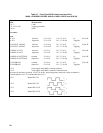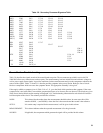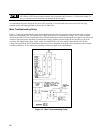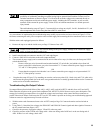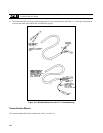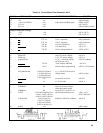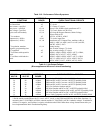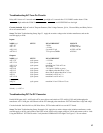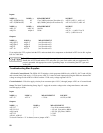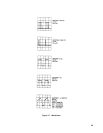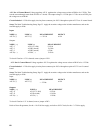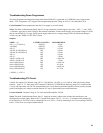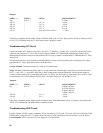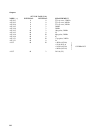
58
Inputs:
NODE (+) NODE (-) MEASUREMENT SOURCE
A2J7-26(PWM-ON) M
1.7µs, 20KHz pulse(see Waveform #1)
A2Ul5-l,A2J5 11, A4P1-A3
A2J7-25(PWM-OFF) M
10µs, 20KHz pulse(see Waveform #2)
A2U16-5,A2J5-13,A4P1-A2
NODE (+) NODE (-) MEASUREMENT SOURCE
A4P1-C1 A4P1-A1 10.6Vdc AlU3-2
A4Q2-D A4Q4-S 39Vdc A1C51 ( + ),A4P1-22 to 25
A1Cl( - ),A4P1-16 to 18
Outputs:
NODE (+) NODE (-) MEASUREMENT
A4Q1/Q2-G A4Q2-S (see Waveform #3)
A4Q3/Q4-G A4Q4-S (see Waveform #3)
A4Q2-S A4Q4-D (see Waveform #4)
A2J7-18 A2J7-4 (see Waveform #5)
If you replace the FETs, replace both the FETs and associated drive components as furnished in FET Service Kit. Agilent
Part No. 5060-2866.
The FETs are static sensitive and can be destroyed by relatively low levels of electrostatic voltage.
Handle the A4 FET board and the FETs only after you, your work surface and your equipment are
properly grounded with appropriate resistive grounding straps. Avoid touching the FET's gate and
source pins.
Troubleshooting Bias Supplies
+5V On A2 Control Board. The PWM A2U22 includes a clock generator (40KHz set by A2R170, A2C79 and A2Q10),
and a current limit (2Adc set by 0.15Vdc across A2R172). It turns off each output pulse using the difference between the
voltage at voltage divider A2R161-A2R163 and the 2.5Vdc set by voltage regulator A2U21.
Circuit Included. +5Vdc bias supply circuitry from connector pins A2J5-1,3 through jumper A2W3 on A2 control board.
Setup. The Main Troubleshooting Setup, Page 53. Apply the ac mains voltage to the voltage transformer, and set the
external supply to 0Vdc.
Input:
NODE (+) NODE (-) MEASUREMENT SOURCE
A2J7-22 A2J7-4
≈ 21Vdc
A1CR2,A1CR5
Outputs:
NODE ( + ) NODE (-) MEASUREMENT
A2U22-7 A2J7-4
≈2 to 4Vdc sawtooth, 40KHz
A2U22-12,13 "
≈ 19V pk, 15µs pulses, 40KHz
A2Q9 (emit) "
≈ 20V pk, 5µs pulses, 40KHz
A2U21-2 " 2.5 Vdc
A2R161, A2R163 " 2.5 Vdc
To check if load on + 5V is shorted, remove jumper A2W3



